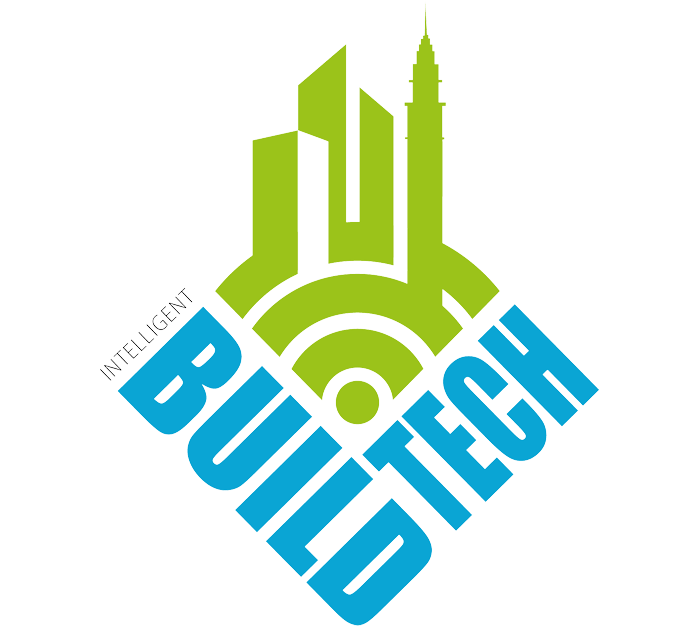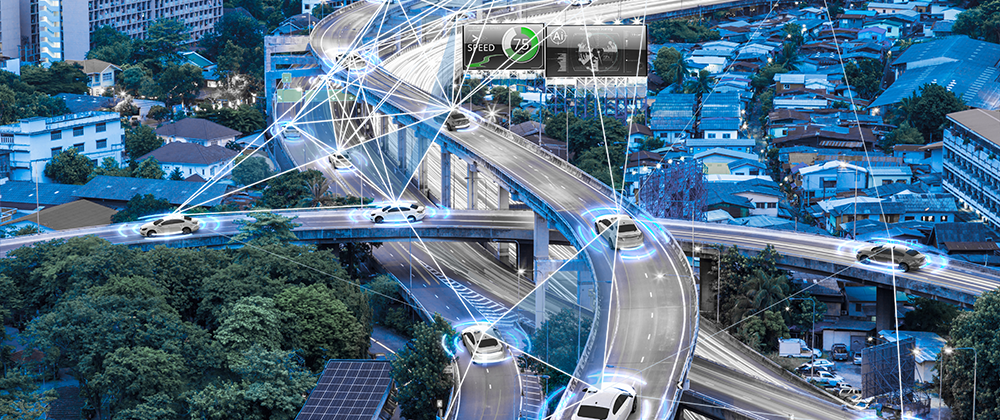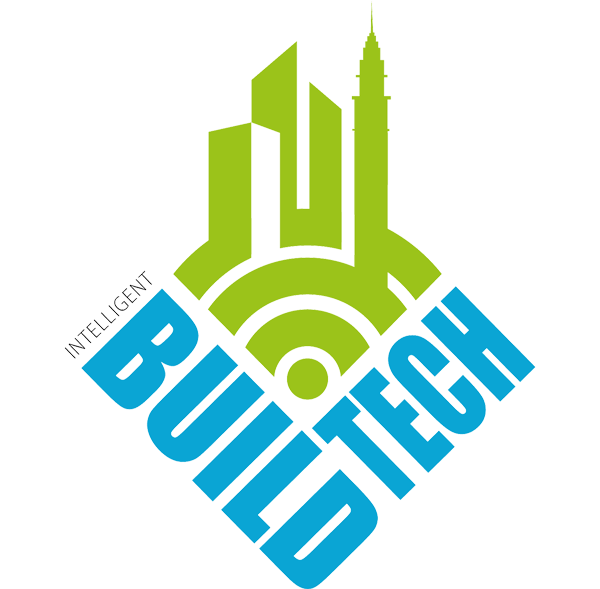With high focus and funding on urban projects, net zero goals and growing social pressure for accessibility, urban landscapes are rapidly changing across the world. The adoption of Smart Transportation and traffic management solutions is helping with this demand and is reforming how we travel. This change goes beyond simple efficiency as this technology is enhancing safety, accessibility and sustainability in our cities.
Taking a look at the technology itself, Internet of Things technology (IoT) arguably is the key technology in making Smart Cities smart. IoT devices include Smart Metres, streetlights, public transport systems and traffic management systems, to collect and transmit data to central systems. This data is then used to further relieve pain points and improve infrastructures. These devices can also depend on other technologies like AI or 5G for a fast and responsive network.
Efficiency is appealing and having devices communicate with you, the traveller, can make visiting a city a more enriching experience. Car parking, for example, can be a time-eating endeavour in which we spend potentially hours trying to source a safe, affordable and localised place to leave our transport. Examples of parking solutions include San Francisco’s Smart Ticketing, used to streamline processes and allows authorities to adjust parking prices based on the number of available spaces and more commonly in other cities, we are seeing the use of sensors to identify empty parking spaces in multi-storeys to reduce searching times.
Efficient public transport can also make our visits or commutes a more enjoyable experience, with device communication offering real-time updates, whilst also supporting bus/tram/taxi drivers with Smart Corridors that alert drivers of upcoming traffic conditions, results in punctuality.
The relationship between foot traffic and road traffic can also be improved by introducing concepts like Smart Streetlighting which improves the safety and visibility for pedestrians and drivers, including Personal Light Electric Vehicles (PLEVs) like electric scooters, hoverboards and Segways. Another solution is adaptive traffic signals which offer real-time traffic management, taking fluctuating traffic conditions into account unlike traditional traffic signals that employ timers and inductive loops for light changes, resulting in unnecessary waiting times and congestion.
Another opportunity for Smart Transport and traffic management solutions to change our urban mobility for the better is by making cities more accessible and safe places for people with disabilities. As accessible pedestrian signals (APS) traditionally rely on pushbuttons, a company called Inclusivity City Maker created their own APS, aBeacon, which uses remote activation and provides audio information about crossings, street names and directions, all easily controlled with a remote. This is just one example of how smart technology can change urban mobility for the better.
In this month’s Editor’s Question, we ask two experts from Cubic Transport Systems and Carteav, for their insights on how smart transportation and traffic management solutions are shaping urban mobility.
Audrey Denis, Senior Strategy Manager at Cubic Transport Systems

Every transit network – rail included – has unique challenges, but one factor they all share is the need for greater digital mobility to address congestion, pollution and urbanisation. While local stakeholders in cities the world over are enthusiastically deploying digital tools, such as mobile ticketing or real-time route and network information, these represent just the starting point for what’s really needed to build solutions that will stand the test of time.
Digital mobility has the potential to integrate each mode of transport into a unified operating network across the whole transportation ecosystem. Connecting everything, from local buses to ridesharing to traffic management, to provide one efficient, coordinated journey. Harvesting data from multiple sources, such as ticketing systems on public transport, digital toll booths, and traffic light cameras, enables total visibility in real-time of network demand and bottlenecks. That means transit managers can plan more efficiently and introduce flexible, adaptive and responsive incentives to optimise traffic and encourage passengers to choose the most sustainable option.
Digital mobility intersects with public policy, which influences the transit network’s planning and operations according to civic preferences. This could mean increasing the cost of road use to reduce carbon emissions; or increasing public transit investments in specific regions or neighbourhoods to boost fairness among different sections of the public. The beauty of digital mobility solutions is their versatility, providing a solid basis on which cities can make specific changes related to their ultimate objectives.
Technically speaking, digital mobility is available today: all the requisite tools to enable real-time, coordinated, and integrated mobility across multiple transport modes can be deployed through infrastructure upgrades and cloud-based SaaS solutions. Putting in place the foundational elements, like a unified account-based ticketing and payment platform which is interoperable between all transit options, is no longer a pipe dream or prohibitively expensive.
From a social point of view, we see that many of the sensational innovations happening in transit today are related to mobile devices and contactless payments. However, not everyone owns – or wants to own – a smartphone. Therefore, these technological advances must be complemented with similar solutions for people without bank accounts or with an aversion to technology. We have to consider the needs of everyone and ensure equitable access to the differently abled and those on low incomes. Digital mobility provides a defined route to consistent and enduring stability. For cities and provinces ready to invest in next-generation tools and services, the promise of digital mobility is just around the corner.
Avinoam Barak, CEO of Carteav

The heavy traffic found in urbanised areas today encourages cities to seek sustainable solutions. The COVID-19 experience showed that decreased traffic directly increases quality of life for the residents of the city. It provides other advantages, such as more space, less pollution and no need to look for costly parking. An increasing number of cities are now deciding to limit the number of cars, mainly in their centre, to encourage the use of micro mobility options such as bikes and scooters to travel. These vehicles are electric and therefore do not pollute, and they don’t require the same amount of parking space as cars. Cities like Paris, Oslo, Copenhagen and more are converting roads to bike lanes.
However, this trend has some drawbacks. In order to provide a usable service, there is a need for a large number of vehicles. The vehicles are distributed all over. Scooters don’t have docking ports and therefore users leave them anywhere, and they start to become a nuisance.
Scooters also require logistical care. Every day there is a need to redistribute the scooters to a starting location and recharge them. Two-wheeled vehicles are also simply not used by many people, including elderly persons, small children, people with disabilities and people carrying goods. There is also a major safety issue when it comes to scooter use.
Given these drawbacks, many cities – for example Paris – have decided to ban shared scooters from the city.
A complementary solution to the current micro mobility offerings is a low-speed, small, 4-wheeled vehicle, which ideally would be autonomous. Fewer vehicles are needed as they can move autonomously from one place to another. They are safe and can carry elderly people, children, the disabled and people carrying goods, and they are safe, because they drive at low speed. In addition, the vehicles can be sent autonomously to recharge, reducing the need for expensive logistics arrangements.
To enable such a service, cities need to provide charging stations which will be wireless and therefore will not require human intervention. Such vehicles can also be used for last mile transportation between public transport hubs and homes or offices, using dedicated roads such as bike lanes. With low infrastructure investment, safe and efficient transportation can serve the majority of the residents of cities today.




